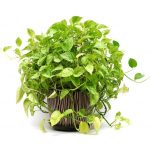Adding Boston ferns to a room or a patio space is an easy way to add color and liven up the decor. They have a traditional fern shape with long fronds branching out from the center. Each frond has numerous small leaves paralleling each other along both edges, giving it a lush green appearance. When placed in a pot, the fronds spill over the edge of the pot, giving it a bushy appearance.
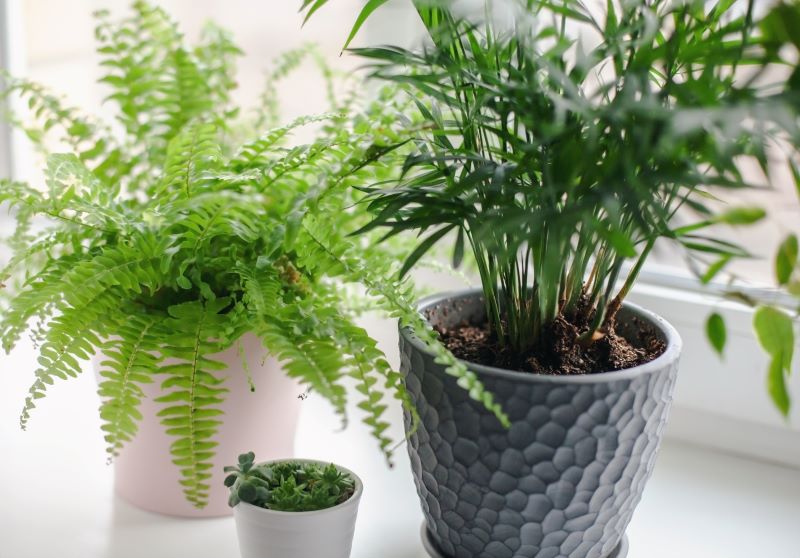
Because Boston fern indoor care is so easy, it’s a staple for many home gardeners. It survives well in standard indoor temperatures and humidity levels, and it can live in a variety of lighting conditions. It can also be kept in various types of pots for display. While they are young, Boston ferns can be kept in a small pot, but they will need larger pots as they grow. Boston fern propagation is also very easy, so it’s simple to give pieces of the fern to friends or to start a new plant of your own.
Boston ferns are naturally a low-growing plant that lives in the shade of larger trees in cool, humid environments. When grown outdoors in ideal conditions, this fern can mature to be 8 feet tall and 8 feet wide. However, they don’t typically grow to be as large when kept indoors. Boston fern indoor care includes trimming them to keep them at the desired size and moderating their growth.
Add a delightful Boston Fern to your home. They love filtered sunlight and moist soil and will reward you with their beautiful foliage.
Boston ferns are known to be one of the easiest plants to grow indoors since they do not require a lot of specialized care. If the fern is not doing very well indoors, you may need to change its environment and change your fertilizing routine. Though it is an easy plant overall, it does need specific care. Using the best fertilizer for Boston ferns could improve the overall plant health and help it grow in sub-optimal conditions.
Boston Fern Indoor Care Guide
Light
Since Boston ferns naturally grow under larger trees, they grow best in moderate light with some filtered light. For the best Boston fern indoor care, place them near a window that gets some filtered sunlight throughout the day.
Boston fern hanging baskets require a little extra care in regard to lighting if they are grown on a patio with sunlight. In order to keep the fronds looking bushy and even on all sides, you will need to rotate the hanging basket every couple of days. Otherwise, the fern will start to grow toward the sunlight, and it will become lopsided.
Water
Because this fern comes from swampy, humid environments, it is extremely important to keep it watered appropriately. Boston fern indoor care includes keeping the soil watered consistently. This plant should never be left in dry soil.
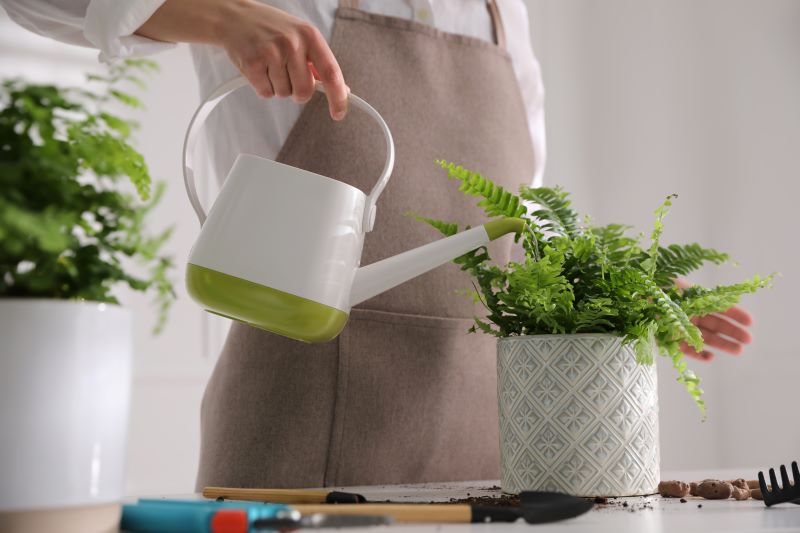
Temperature and Humidity
Boston ferns grow well in temperatures between 60℉ and 75℉. However, they can live in slightly colder temperatures as well, especially if the low temperatures occur overnight. They should not be kept in temperatures above 80℉. Note that if temperatures in your area consistently drop below 75℉ during the day, you may need some tips for wintering your Boston Fern.
If they start to get too hot or dry out too much, their leaves will start to turn brown and die. If the leaves start to die off, prune the dead leaves and move the fern to a cooler environment.
Even when grown indoors, Boston ferns need to be kept in a somewhat humid environment. If the room where the plant is kept tends to be dry, you may need to buy a small humidifier. Otherwise, your Boston fern indoor care could include spraying the fern with a mist of water every day.
Fertilizer
The best fertilizer for Boston ferns is liquid fertilizer or slow-release pellets given every month from spring through fall. Initially, dilute the liquid fertilizer to half-strength rather than using full-strength. If you find that the plant is still struggling, increase the amount of fertilizer a little bit.
Pruning
If the leaves start to turn brown and die, prune them. Leave the healthy green leaves and move the plant to a more hospitable environment. You may need to change your watering or fertilizing routine or move the plant to an area with better lighting.
Planting Guide
Soil
Boston ferns do best with a loamy soil that is similar to their natural habitat. Ideally, soil that contains natural organic material is best. Make sure that the soil can drain so that the roots don’t get water-logged. Though Boston fern indoor care includes keeping the soil moist, don’t let it stay very wet or the roots can start to rot.
Propagating
Boston fern propagation follows the same process as repotting. Spring is the best time to repot Boston ferns for propagation.
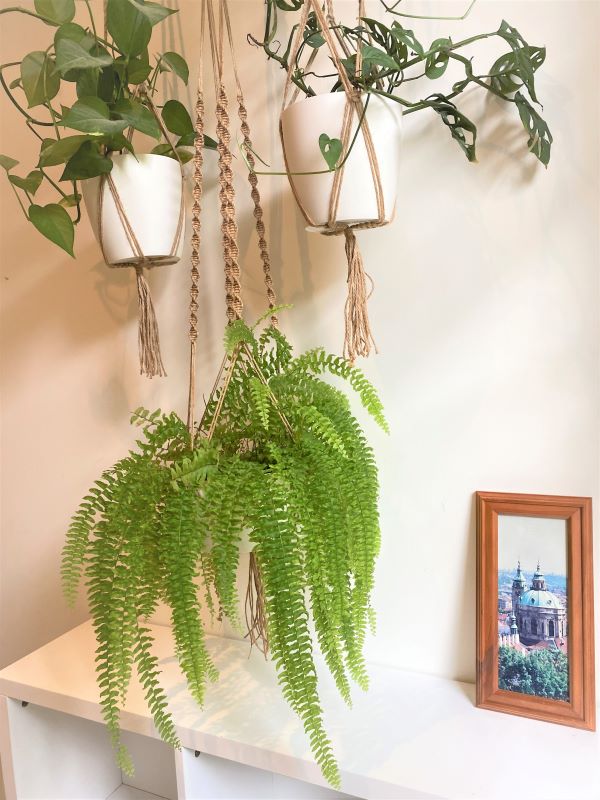
Repotting
Since Boston ferns can grow to be very large, their roots can start to take up too much space in the pot as the plant grows. If the plant starts to outgrow its pot, it’s time to repot the fern or at least part of the fern. If you just want to repot a portion of the fern, let the soil dry out a little bit and remove the fern from the pot. Then use a serrated knife to cut through the roots to separate a portion of the fern. Place both potions of the fern into the pots that you would like to use, add new soil, and water the ferns.
Even if the fern has not outgrown its pot, it’s best for Boston fern indoor care to repot the plant in fresh soil each spring. You can use the same pot if you would like. Just change out the soil so that the plant can get the nutrients from the new soil.
Problems With Growing Boston Ferns Indoors
Even when grown indoors, Boston ferns can be susceptible to scale and mealybugs. If you have recently transitioned the fern indoors from an outdoor space, also keep an eye out for slugs and whiteflies.
The primary issues for these ferns stem from improper care. Most Boston fern indoor care problems come from improper temperature, humidity, and watering. Don’t let the plant dry out and don’t over-water it.
Toxicity
Boston ferns are non-toxic for people and pets.
Do’s & Dont’s
Do’s
- Keep the soil moist
- Give it moderate sunlight
- Keep the temperature between 60℉ and 75℉
Don’ts
- Over-water it
- Let it dry out
- Leave it in direct sunlight
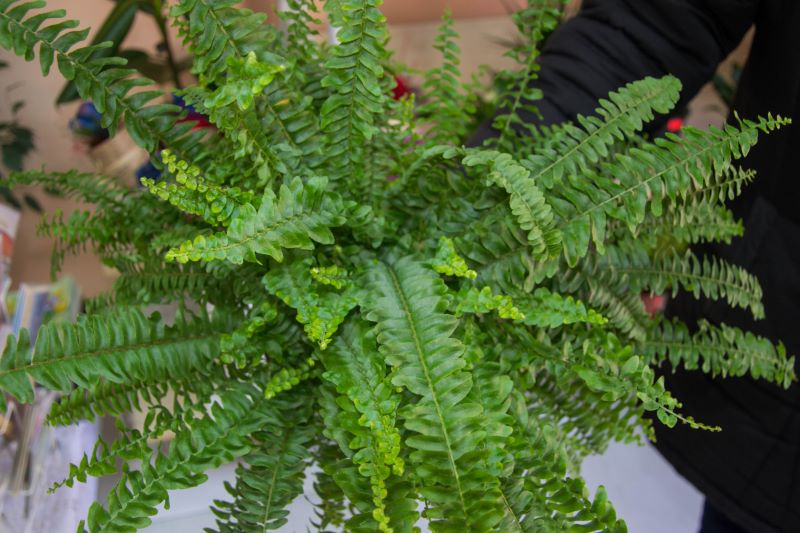
Summary of Boston Fern Indoor Plant Care
Overall, Boston ferns are an easy plant to keep indoors or on a patio. They are decorative and can be displayed in pots on the ground, in hanging baskets, or in an arrangement with other plants. Boston fern hanging baskets make a great addition to a sunroom or patio, and their care is just as easy as their potted counterparts.
Due to the plant’s resilient nature, Boston fern indoor care is pretty simple. It requires moderate sunlight, a cool room temperature, and moderate humidity. Since it does not need to be pruned or repotted very often, it does not require much more than watering and occasional fertilization. As your plant continues to grow, it is easy to share with friends or to separate to add more ferns to your collection.


